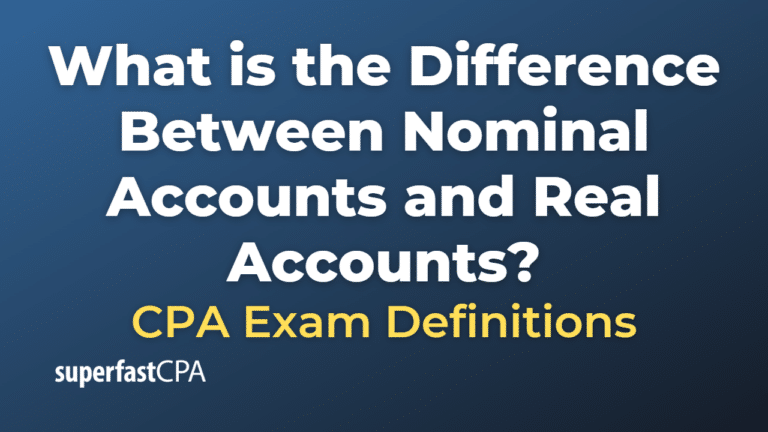Cash accounting is simpler, while accrual accounting gives a more accurate picture of a business’s financial position. For instance, you have a temporary sales account in your books that records the sale of services or goods during the financial year. The sales values are transferred to the revenue account at the end of the financial year.
Get in Touch With a Financial Advisor
Nominal accounts are temporary accounts used in accounting to record revenues, expenses, gains, and losses during a specific accounting period. These accounts play a crucial role in providing accurate and relevant financial information to stakeholders. In the accounting cycle, accountants analyze and record the transaction in the accounting system to prepare the financial statements. During the recording, they need to select the accounts for debit and credit, some system may use different model but they still follow the same concept. The transactions will record into general ledger and at the month-end, the balance in each account will end up on the trial balance.
Accounting
Accountants must ensure that all financial events are captured within the appropriate accounting period. This temporal precision is necessary for adherence to the matching principle, which states that expenses should be recognized in the same period as the revenues they helped to generate. This principle is fundamental to accrual accounting and ensures that financial reports provide a true representation of a company’s financial performance. A nominal account is a general ledger or temporary account formed and maintained by a business. It includes all necessary records of the business’s expenses, losses, gains and revenues for a particular financial year.
What is the approximate value of your cash savings and other investments?
The debit and credit rules are applied correctly when the type of account is accurately identified. By doing this, all financial events of a business are accurately recorded and accounted for. As a result, in the light of the accounting equation, debits are always equal to credits and the balance sheet is always a match. Normally, nominal accounts are used to accumulate income and expense data.
Nominal Accounts in Financial Reporting
They deal with the balance sheet as well as assets, liabilities, and equity. Since the owner’s drawing account is not an income statement account, its balance will be closed by transferring its debit balance directly into business accounting systems the owner’s capital account. Cash accounting records transactions when cash is received or paid, while accrual accounting records them when the transaction occurs, regardless of when the cash is received or paid.
Nominal accounts, also known as temporary accounts, are used to record transactions related to income, expenses, gains, and losses. These accounts are reset to zero at the beginning of each fiscal year; their balances are transferred to permanent accounts on the balance sheet. By tracking these figures, companies can assess their financial performance and make informed decisions about future operations. A nominal account, in accounting and finance, is a temporary account used to record financial transactions related to revenues, expenses, gains, and losses for a specific accounting period. These accounts are closed at the end of an accounting period, and their balances are transferred to permanent accounts such as the retained earnings account. Nominal accounts help to determine the financial performance and profitability of a business.
You can store all financial transactions in your nominal account for one fiscal year. At the end of a financial year, balances of nominal accounts get transferred to permanent or real accounts. Nominal accounts record revenues, expenses, gains, and losses, while real accounts record assets and liabilities, and personal accounts record transactions with individuals or entities.
Revenue, Expense, and Gain and Loss are common types of nominal accounts. The golden rule for nominal accounts is to credit profits and income while debiting losses and expenses. Knowing how to transfer funds from a nominal to a real account is essential for financial reporting. A nominal account is an account in which accounting transactions are stored for one fiscal year.
- This section is dedicated to the practice of the three types of accounts in accounting.
- Knowing how to execute accounting processes properly is essential for an accountant and the business as a whole.
- Actual cash is not received, instead, adjustments are made within relevant accounts.
- They are temporary accounts that are closed at the end of each accounting period and their balances are transferred to permanent accounts.
- Reflects the financial position of the business at a point in time.
On the basis of how often the money comes in and goes out, the amount in the account has to be divided, as discussed below. Type – Cash A/c is a Real account, Discount Allowed A/c is a Nominal account, and Unreal Co. The entry acts as a counterweight and is made to reverse or offset an entry on the other side of an account. Based on the periodicity of the flow of funds, the account is divided as below.
As they are temporary accounts, transferring and adjusting funds in a permanent or real account is important in the next financial year. A nominal account helps to track any of your transactions that affect income statements. Understanding how to do all your accounting processes accurately is important for business.



